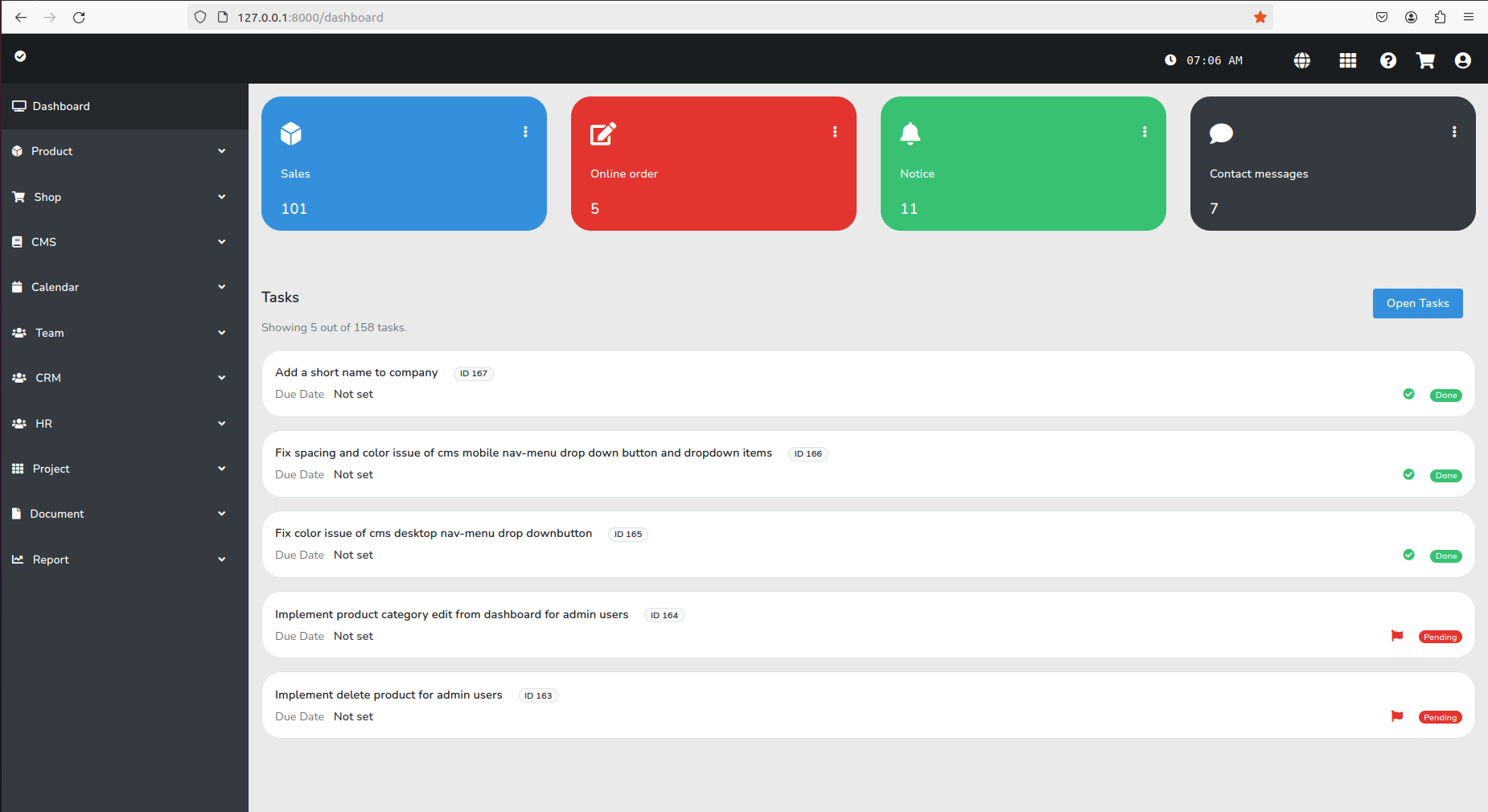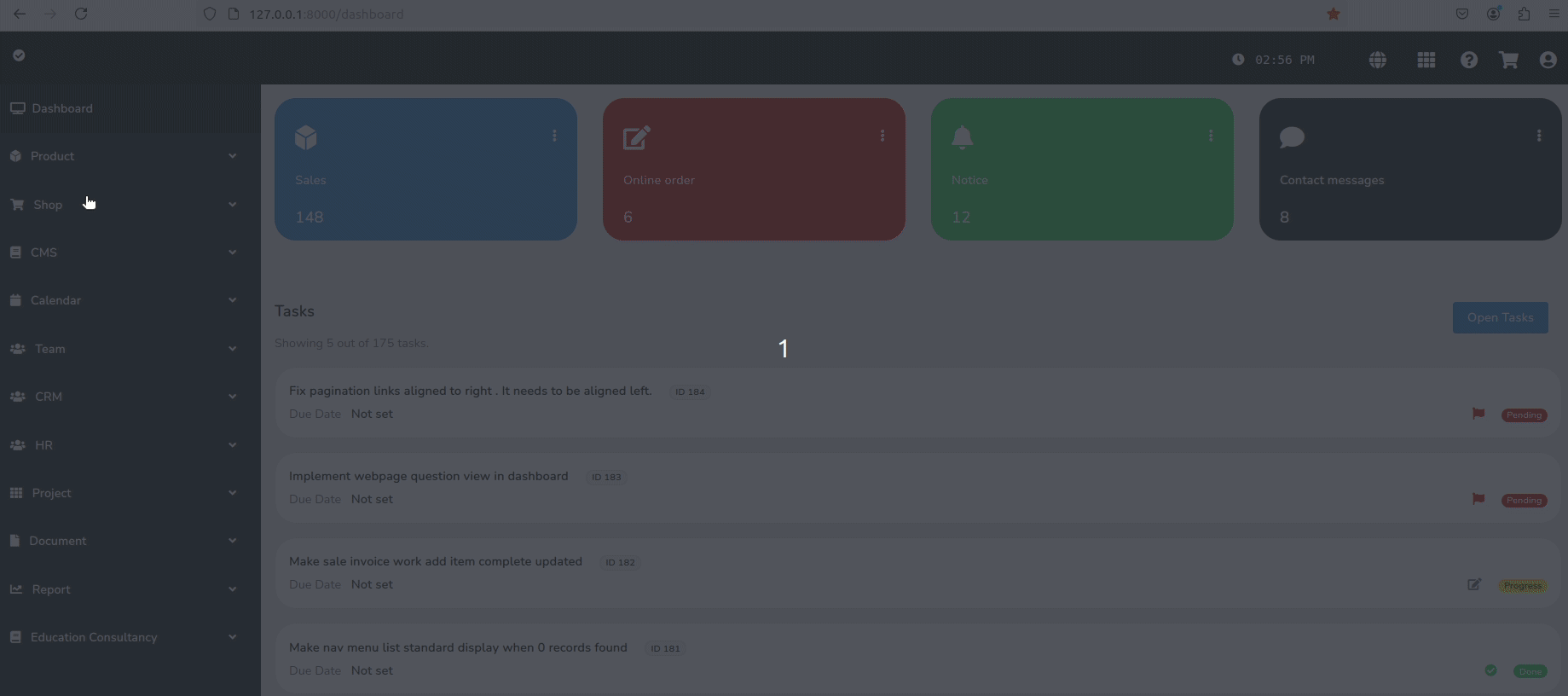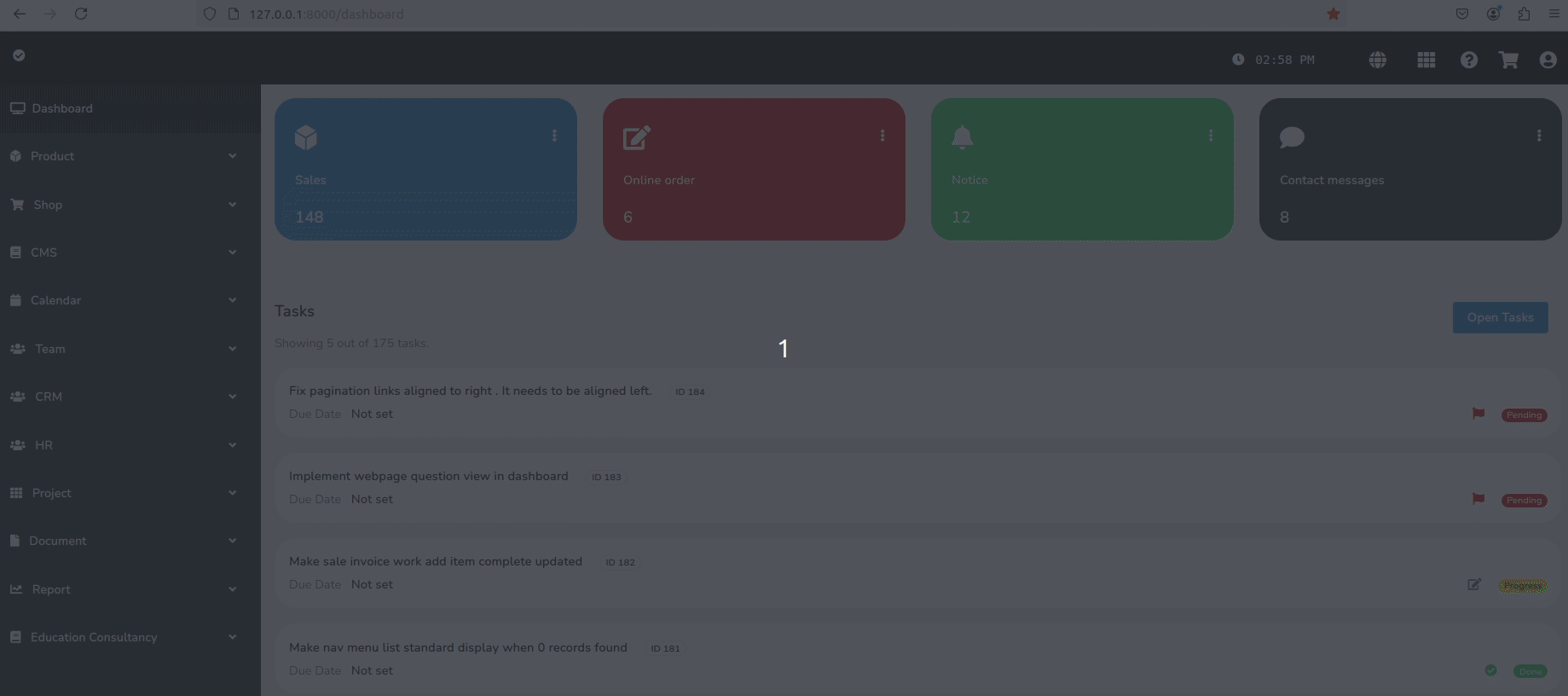Open source ERP plus Content Management System (CMS) built with Laravel and Livewire. You can create webpages and blog posts easily from easy to use admin panel. Apart from CMS, there are also other features like product display, invoice creation, calendar events, contact message, task manager, document sharing etc.
- Content Management System (CMS)
- Ecommerce support
- Product Catalogue
- Invoice Generation
- Calendar Events
- Team Catalogue
- Contact Message
- Appointment Scheduler
It is just another laravel application. So we do all the steps required to get a laravel application working.
Below applications must be installed in the system.
php >= 8.1
mysql >= 8.0
composer
npm
Perform below steps to get the application running.
First create a mysql database. Then grant access to the mysql user.
Lets assume you created database named demo_database and you granted
access to mysql user demo_user. You will need this info to enter
in the .env file later.
Clone the repository.
$ git clone https://github.com/oitcode/samarium.git
Go to the directory.
$ cd samarium
Copy env.example file to .env file
$ mv env.example .env
Now, enter database name, mysql username and mysql password in the .env file. Your .env file's database part should be like this.
DB_DATABASE=demo_database
DB_USERNAME=demo_user
DB_PASSWORD='demo_password'
Please replace demo_database, demo_user and demo_password with real
database name, username and password.
Install composer dependencies.
$ composer install
Install npm dependencies.
$ npm install
Compile front end assets.
$ npm run dev
Run database migrations.
$ php artisan migrate
Generate key.
$ php artisan key:generate
Create storage links.
$ php artisan storage:link
If you do not want to perform all the installation steps manually, then there is a bash script provided that will run all the required steps.
Please run below bash script.
bash app-install.sh
To use the dashboard, you need a username and password. Use below seeder file to create first user. This will create an admin user. After that you can create other users from dashboard.
php artisan db:seed --class=UserSeeder
php artisan serve
Now open your web browser and visit
- 127.0.0.1 to see the website
- 127.0.0.1/dashboard to see the dashboard
Below are screenshots of most used functionalities.
Please contribute to this project. Contributions are welcome.
If you find any issue in this application, you can help by raising an issue here in our github repo.


